Body Fitting Exercises: A Warm, Real-World Guide to Getting Lean, Strong, and Confident at Home
A personal, research-backed guide to body fitting exercises—practical routines, progressions, and simple habits to get lean and strong at home.
What if your fittest self is five feet from your coffee mug? I’ve always believed good fitness doesn’t need a membership, a mood-lit studio, or a machine that looks like it escaped from a sci-fi set. With body fitting exercises, you use what you have—your body, a little floor space, and a plan—to build strength, energy, and a shape that’s comfortable to live in. No commute, no crowds, and zero “wait, how does this machine work?” moments. When I switched to body fitting exercises after years of on-again-off-again gym romance, everything clicked: fewer aches, better sleep, and the sudden ability to carry all the groceries in one trip (out of sheer principle, obviously).
This is the guide I wish someone handed me—human, helpful, and actually fun to read. I’ll show you exactly how to warm up, what to do, how to progress without burning out, and how to measure success without letting a scale ruin your day.
So bear with me and your overall health will thank you for starting these exercises.
What Body Fitting Exercises Really Are (And Why I Swear By Them)
Body fitting exercises are compound, functional movements designed to build a balanced, toned, capable body—no bulky machines or bulky muscles required. Think squats, lunges, push-ups, planks, hip hinges, rows, carries, and short conditioning finishers that won’t wreck your joints. They’re called “fitting” because they adapt to you: your current strength, your space, your schedule, even your cranky knee that sounds like bubble wrap on rainy days.
I fell for body fitting exercises because they translate to real life. I’m talking “no more old-man noises when picking up a kid,” “stairs without drama,” “posture that doesn’t surrender at 3 PM.” The first time I realized my back wasn’t barking after a long day at the desk, I was sold.
The best part? I saw improvement in my overall health. More than the weight loss, my heart rate tremendously improved after I practice discipline in my fitness journey – which mean consistent workout and regular movement.
Why Body Fitting Exercises Work (Short Version: Efficiency Meets Consistency)
Body fitting exercises are built on three pillars: compound movements, time-under-tension, and progressive overload.
- Compound work recruits multiple muscles at once, ramping up energy demand and improving coordination. A review in Sports Medicine (Paoli, 2012) found that multi-joint lifts drive stronger metabolic and hormonal responses than isolation moves. In normal-human speak: more results per minute.
- Time-under-tension (like a 3-second lowering phase) trains strength and control. Your joints feel better; your form gets cleaner.
- Progressive overload doesn’t require heavy equipment. Add reps, sets, tempo, or a slightly tougher variation every week or two. Small, steady bumps win.
If you’re wondering whether push-ups can hang with the bench press, a randomized trial in the Journal of Strength and Conditioning Research (Calatayud et al., 2015) showed matched-load push-up progressions can rival bench press strength gains. ACE has reported meaningful strength increases in 6–8 weeks with structured bodyweight programs. Translation: your living room is a legitimate training ground for body fitting exercises.
The Simple Blueprint I Use for Body Fitting Exercises
I like plans that survive busy Tuesdays. Each session hits 4–6 of these patterns:
- Squat or sit-to-stand
- Hip hinge or bridge
- Push (horizontal or vertical)
- Pull/row (bands or towel)
- Core stability (planks, dead bugs, anti-rotation)
- A short conditioning finisher (step-ups, mountain climbers, marching)
When in doubt, keep it simple. I’ve never regretted simple.
Five-Minute Warm-Up That Actually Helps
I used to skip warm-ups. I thought to myself “my muscles will eventually adapt”. Wrong move and my knees and back protested that life choice. I remember my back hurt bad after I finished my routine. I could not do even one rep more. Worse part was that my back pain lasted for weeks.
This five-minute preflight check will change everything. It target multiple muscle groups that will save you unnecessary pain:
- Cat-cow x 6–8
- World’s greatest stretch x 2/side
- Scapular push-ups x 8–10
- Glute bridges x 10 with a 2–3 second squeeze
- Ankle rocks x 10/side
You should feel warmer, more coordinated, and slightly smug about taking care of your joints.
Start Here: Beginner Body Fitting Exercises That Build Confidence
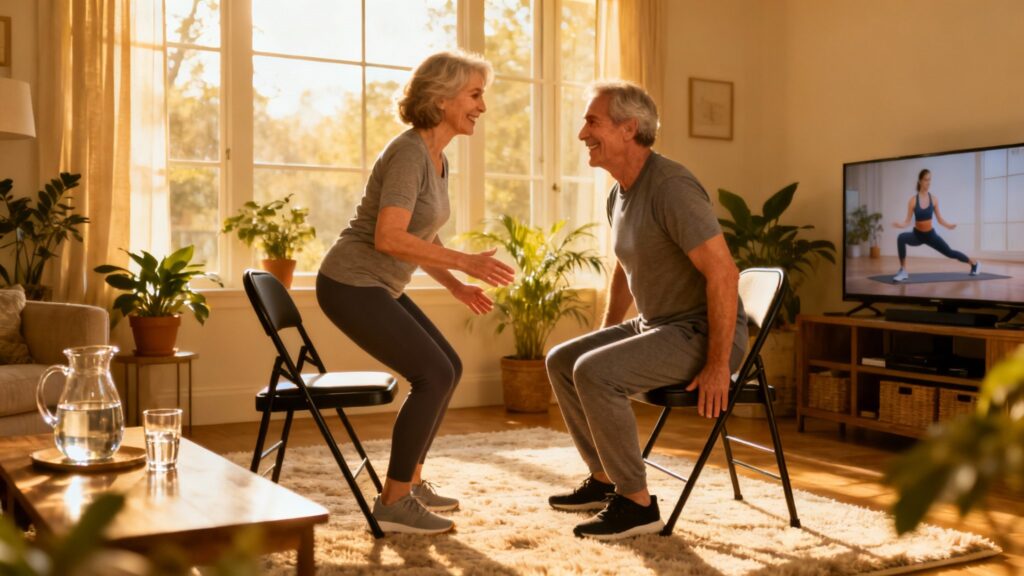
No bravado, no punishment—just clean, repeatable reps.
- Chair sit-to-stand or box squat: 2–3 sets of 8–12
- Incline push-up (wall → counter → table): 2–3 sets of 6–10
- Glute bridge: 2–3 sets of 10–12 (2–3s squeeze up top)
- Forearm plank (knees if needed): 2–3 sets of 15–30s
- Dead bug: 2–3 sets of 5–8/side
- March-in-place or step-ups: 2–4 minutes at conversational pace
Tiny cues that pay off quickly:
- Squats: “sit back, then down,” knees tracking over toes.
- Push-ups: ribs down, head long, body like a plank—not a hammock.
- Planks: check your plank position and if your low back arches, shorten the hold, reset, and try again.
True story: I started with wall push-ups and felt ridiculous with that pushup position. A few weeks later I moved to the counter, then the floor, and suddenly those reps felt like a real superpower. Body fitting exercises are like that—quiet wins that sneak up on you.
Level Up: Intermediate Body Fitting Exercises With Clean Form
Once the basics feel steady, add range, unilateral work, and a little spice.
- Full bodyweight squat: 3 x 10–15
- Reverse lunge or split squat: 3 x 8–12/side
- Standard push-up: 3 x 6–12
- Hip hinge (Romanian deadlift pattern) with backpack: 3 x 8–12
- Side plank: 2–3 x 15–30s/side
- Mountain climbers: 3 x 30s on, 30s off
Progression ideas that don’t wreck you:
- Tempo (3–1–1): three seconds down, pause, one second up
- Rest: shave 10–15 seconds off between sets
- Range: lower your chair/box for sit-to-stands
- Stability: move from bilateral to staggered stance to single-leg where appropriate
Feeling Strong? Advanced Lower Body and Strength Training—Still Smart, Just Spicier
Spice is great; chaos is not. Keep control the priority.
- Jump squats (quiet landings): 3 x 6–10
- Decline or pike push-ups: 3 x 6–10
- Single-leg deadlift (bodyweight/backpack): 3 x 6–10/side
- Bulgarian split squat: 3 x 6–10/side
- Hollow hold or long-lever plank: 3 x 15–30s
- Optional burpees: 2–3 x 6–10 with form, not fury
I don’t do burpees to “feel destroyed.” I do them in small, clean sets so my knees and back remain on speaking terms.
An 8-Week Progression Plan for Body Fitting Exercises
I love plans that account for real life—progress, but with brakes that work.
- Weeks 1–2: 2 sets, 8–10 reps (or 20–30s holds), RPE 6–7, rest 60–75s
- Weeks 3–4: 3 sets, 10–12 reps, RPE 7–8, rest 45–60s
- Week 5: Keep sets; add tempo (3–1–1) to squats, push-ups, hinges
- Week 6: Progress one variation (incline push-up → floor; box squat → full squat)
- Week 7: Deload—reduce volume ~30%, emphasize mobility and sleep
- Week 8: Retest benchmarks: max clean push-ups, 60–90s strict plank, sit-to-stand in 30s, brisk 1-mile walk
RPE (rate of perceived exertion) 7 = challenging, repeatable, excellent form. Save “movies-level” grit for, well, movies.
Full Body Workout: Weekly Templates That Fit Busy Lives
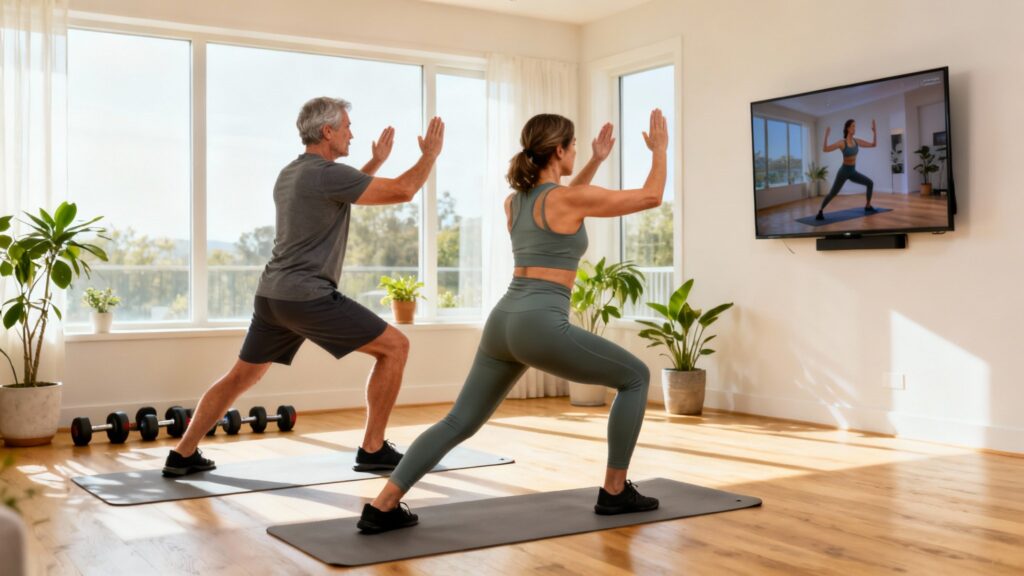
Three to four days per week. Focused sessions beat daily “kinda-sorta” workouts every time.
- Day 1 (Full body, strength focus)
- Squat → Push → Row/pull-apart → Plank → Bridge
- 6–8 minutes Zone 2 cardio (walk, step-ups)
- Day 2 (Lower body + core)
- Split squat → Hip hinge → Calf raises → Side plank → Dead bug
- Optional: 6 x 30s low-impact HIIT (fast march, step-ups), 30s rest
- Day 3 (Upper body + conditioning)
- Push-up variation → Pike push-up or overhead press (band/backpack)
- Band pull-aparts or towel rows → Forearm plank
- 8–10 minutes shadow boxing or brisk march
- Day 4 (Optional mobility/recovery)
- 15–25 minutes of hips, T-spine, shoulders, ankles
- Easy walk with nasal breathing
Cardio approach for body fitting exercises:
- Zone 2: 2–3 sessions/week, 15–25 minutes at a talkable pace
- Optional HIIT finisher: 6 rounds of 30s work/30s rest, low impact preferred Both ACSM and the UK Chief Medical Officers recommend blending moderate cardio with resistance work for health and body composition—this checks both boxes.
Equipment That Actually Helps (And What I Use)
The star of body fitting exercises is your body. A few helpers—most of which I already had—make it smoother:
- Exercise mat (knees and elbows say thank you)
- Sturdy chair or step (endless options unlocked)
- Resistance bands (rows, pull-aparts, assisted pull-ups)
- Backpack (instant load for squats, hinges, rows)
- Optional dumbbells (5–25 lb go far)
Apartment-friendly swaps I use:
- Towels as sliders (yes, they work)
- Water bottles as light weights
- Quiet cardio: step-ups, marching intervals, power step-backs, shadow boxing I’ve done entire months with a mat, a band, and a backpack. No one at the grocery store knew the difference—except my posture.
Modifications That Respect Real Bodies
Body fitting exercises shine because they adapt. Use these as needed:
- Left knee and right knee grumpy? Box squats, split-stance sit-to-stands, short-stride reverse lunges, wall sits.
- Tight hips/low back? Hip hinges with a dowel/backpack, elevated bridges, cat-cow, hip flexor stretch.
- Wrist sensitivity? Do push-ups on fists or handles; use forearm planks.
- Limited mobility? Partial-range squats with support, elevated push-ups/planks, short-range dead bugs.
Pain policy I actually follow:
- Sharp, pinching, or joint pain = stop/modify.
- Muscular burn, mild shaking with good form = okay.
- You’re not “quitting” by modifying; you’re playing the long game.
If you’re pregnant, recently injured, or managing a condition, check in with a pro.
Remember the back pain I had? Well, I still pushed myself to exercise few days after I trick myself that I am already okay. Guess what? I still can’t do the usual high intensity exercises or a full body workout without feeling a backache.
Keep in mind that exercises can be tailored safely, but your context matters.
Mobility and Cool-Down That Pay Off Tomorrow
I used to think cool-downs were optional. Then I started waking up less stiff. Consider me reformed.
- Hamstring stretch (short lever): 30–45s/side
- Hip flexor stretch with glute squeeze: 30–45s/side
- Pec doorway stretch: 30–45s/side
- T-spine open books: 6–8/side
- One minute of slow nasal breathing, lying on your back
Ten extra breaths changed how my nervous system downshifts after training. Small thing, big return.
How I Track Progress (Without Letting a Scale Be Mean)
The scale is data, not destiny. I’d rather track what changes my daily life.
- Progress photos: same lighting, pose, and clothes every 2–3 weeks
- Functional tests:
- Push-ups (max clean reps)
- Plank (strict, 60–90s cap)
- Sit-to-stand in 30 seconds
- Brisk 1-mile walk time
- Weekly scorecard:
- Average sleep hours
- Energy rating (1–5)
- Daily step average
- Clothes fit (jeans are unflinchingly honest)
Fun curveball: you might weigh the same (or a bit more) while losing inches—classic body recomposition, especially if you dial in protein and sleep. Longland et al. (2016, Applied Physiology, Nutrition, and Metabolism) found higher-protein diets with resistance training supported fat loss while preserving or adding lean mass. Not magic—just consistent body fitting exercises plus recovery.
The Science—Woven In, Not Dropped Like a Textbook
- Paoli A. (2012), Sports Medicine: Multi-joint lifts drive stronger metabolic/hormonal responses than isolation work.
- Calatayud J. et al. (2015), Journal of Strength and Conditioning Research: Push-up progressions can rival bench press when load is matched.
- ACE reports: Bodyweight plans can drive strength gains within 6–8 weeks.
- Longland T. et al. (2016), Applied Physiology, Nutrition, and Metabolism: Higher protein + resistance training supports fat loss with lean mass retention.
- ACSM + UK CMOs: Mix moderate cardio with resistance for health and body composition.
You don’t need to memorize any of that. It just means your sweat has receipts.
Mistakes I’ve Made (So You Don’t Have To)
- Racing through reps. Five crisp push-ups beat twenty noodle push-ups.
- Skipping warm-ups. A five-minute investment saved me weeks of annoyances.
- Doing the same workout forever. If nothing changes, nothing changes—tweak one variable every 1–2 weeks.
- Overtraining. Soreness isn’t a personality.
- Not practicing a proper form during exercises.
- All-or-nothing thinking. Missed a day? Cool. Do two sets tomorrow and keep going. Body fitting exercises reward consistency, not perfection.
My old mantra was “I’ll do extra tomorrow.” Tomorrow laughed. Now I do “small, steady, repeatable,” and the wins add up quietly.
FAQs—Honest, Quick Answers
How often should I do body fitting exercises?
Three to four days per week is the sweet spot.
Can I add cardio without losing muscle?
Yes. Do 2–3 Zone 2 sessions and keep HIIT short and infrequent.
What if I’ve only got 20 minutes?
Pick four moves, do 2–3 sets each, rest 45–60s, and call it done.
Do I need supplements?
Not required. Focus on protein, whole foods, water, and sleep. If you add anything, think vitamin D (if deficient) and creatine (if appropriate).
A Mini Circuit You Can Do Right Now
Consider this your “I’ll start today” moment:
- 10 chair sit-to-stands
- 6–8 incline push-ups
- 10 glute bridges with a 2–3s squeeze
- 20 seconds plank (knees if needed)
Rest 60 seconds. Repeat 2–3 rounds. Twelve to fifteen minutes, no drama. Drink water. Bask briefly in being a person who follows through.
Why Body Fitting Exercises Belong in Your Life
Body fitting exercises are efficient, adaptable, and surprisingly enjoyable once you find your rhythm. They help you look lean without chasing bulk, move better without punishment, and feel good without gimmicks. Start where you are. Progress one small thing each week. Retest in two months and notice how your jeans fit, how your energy lasts, and how your back stops narrating your day.
I don’t chase perfect plans anymore. I chase doable ones I’ll actually repeat. Body fitting exercises are just that—doable, repeatable, and quietly powerful. Your living room is open. Your body is ready. And the version of you who carries all the groceries in one trip? They’re grinning already.
Now take a breath, pick a starting point, and begin. I’m cheering for your next rep.

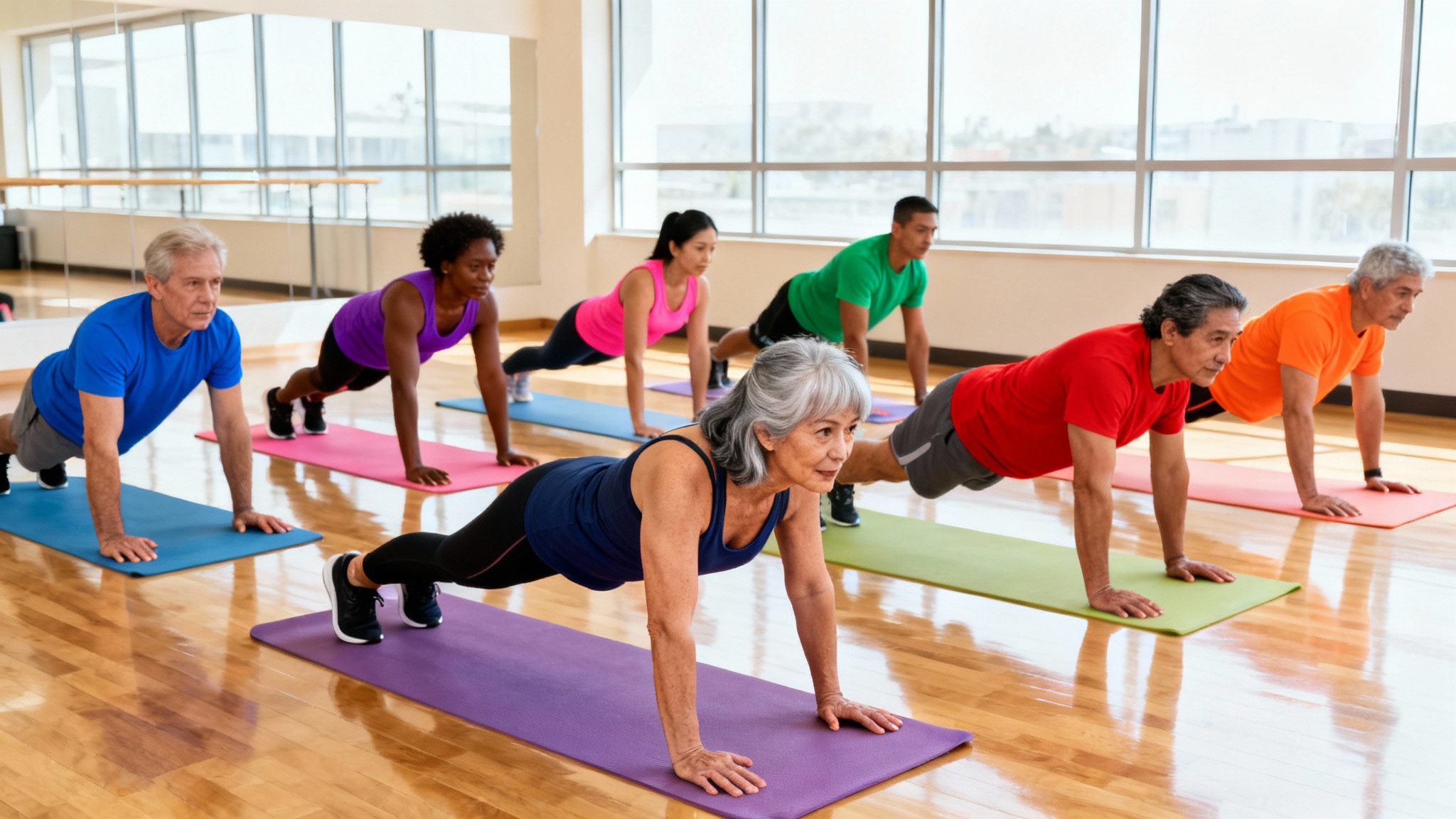

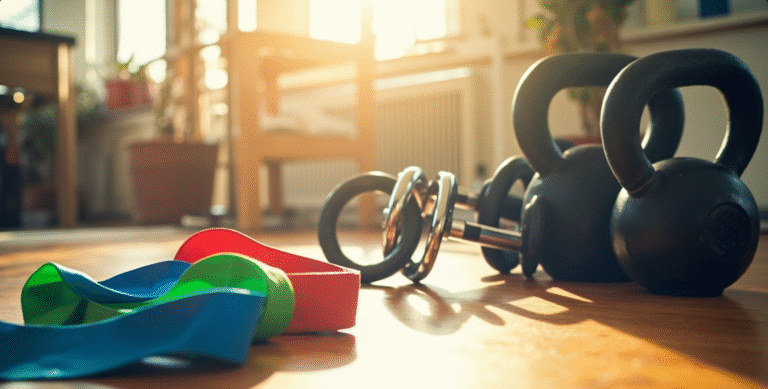



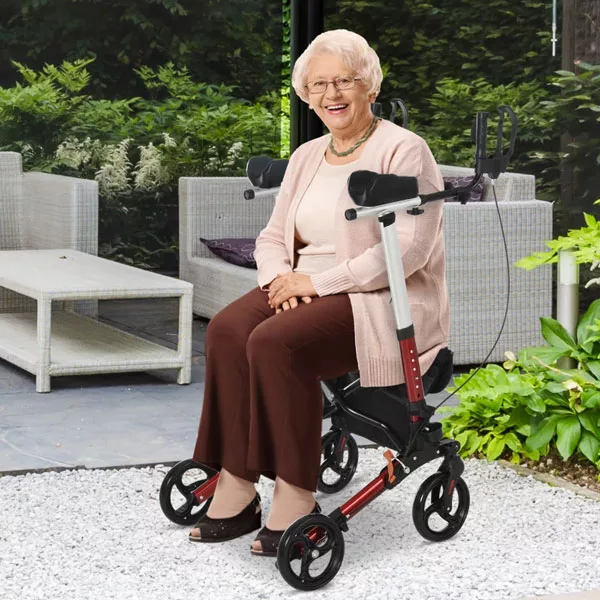
3 Comments
Comments are closed.